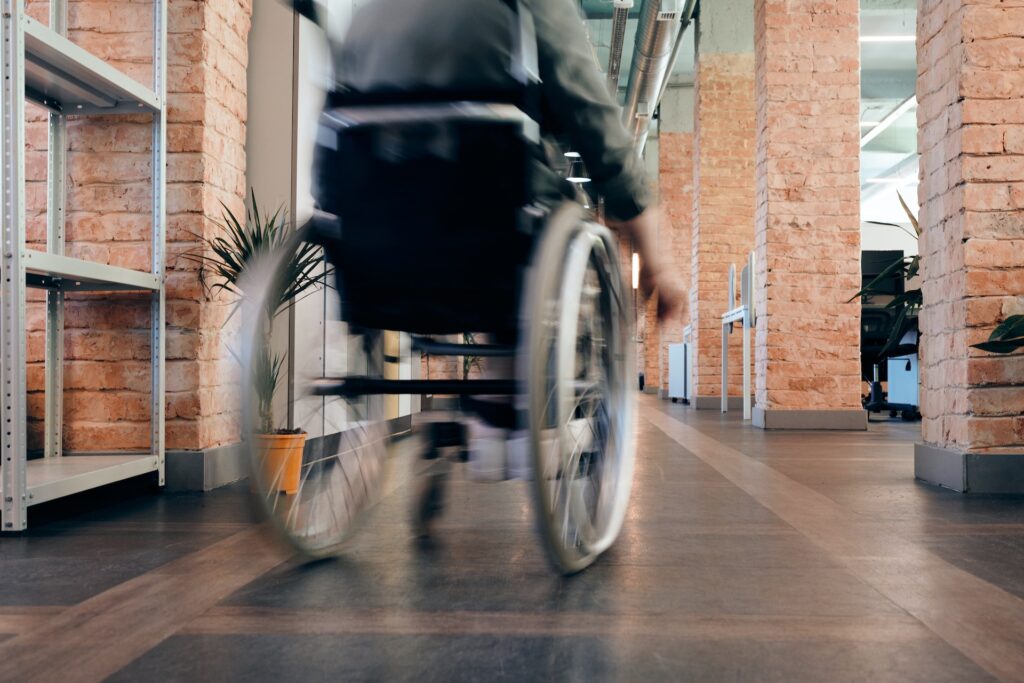Commercial real estate and public spaces exist for everyone, including individuals with disabilities. It’s important that our public spaces and commercial properties are accessible. It’s a promise of fairness and equal chances for everyone, no matter their physical abilities. The Americans with Disabilities Act (ADA) defines the norms to ensure commercial places are accessible to everyone.
The ADA’s accessibility standards are comprehensive and detailed. In this article, we will try to get a summarized overview of essential ADA code requirements for commercial premises, including businesses.
To ensure compliance with the ADA access and other legal codes, it is recommended that you consult the official law statutes and norms, or take professional assistance with an ADA compliance expert. If you are in San Diego County, including Downtown San Diego, Santee, El Cajon, San Marcos, Carlsbad, Encinitas, and Escondido, Busy Bees has expert commercial locksmiths, including commercial door installation and repair, who can help your business meet the ADA standards.
Here are the key ADA access code requirements for commercial premises that are open to public.
1. Accessible Entrances: Every commercial property, including small businesses and stores, is mandated to provide at least one accessible entrance that meets the ADA standards. The ADA code covers not only the entrance itself but also the pathway leading to it. The doorway should be of suitable width, and the door hardware should be designed for effortless operation.
2. Accessible Parking: ADA-compliant parking spaces are also required, including those designed for accessible vans. These spaces should be accompanied by sufficient aisles to facilitate wheelchair maneuverability. Ensuring convenient proximity to accessible entrances is a key consideration.
3. Accessible Paths: The infrastructure of both interior and exterior routes within the commercial property should be designed to with accessibility in mind. Ramps, elevators, and unobstructed pathways that allow individuals with disabilities to navigate with ease and dignity.
4. Doorways: Throughout the commercial premises, doorways should be wide enough to comfortably accommodate wheelchairs. Door hardware should be user-friendly, and thresholds should not exceed 0.5 inches in height to prevent tripping hazards.
5. Restrooms: Restrooms are also part of the ADA requirements for commercial properties. Washrooms should embrace proper clearances, strategically placed grab bars, sinks, and toilet fixtures that cater to the requirements of persons with disabilities.
7. Service Counters: Service counters and checkout aisles should be designed to guarantee that individuals using wheelchairs can engage in transactions with ease.
8. Seating and Tables: Public seating and tables should be an inclusive affair, accommodating individuals with disabilities seamlessly. This involves providing adequate knee and toe clearance, ensuring that wheelchairs fit comfortably.
6. Signage: Effective signage is essential for wayfinding within the premises. ADA-compliant signage incorporates tactile and Braille elements to facilitate navigation for individuals with visual impairments. Optimal signage placement at accessible heights ensures effortless readability.
9. Emergency Exits: Emergency exits should be accessible, and evacuation plans should be crafted with inclusivity in mind. Ensuring the safe evacuation of all individuals, irrespective of physical capabilities.
10. Communication: Facilitating effective communication is of paramount importance. Facilities should be equipped with assistive devices or services, such as sign language interpreters or text-based communication, empowering interaction with individuals who have hearing or vision impairments.
11. Alarms and Notifications: Alarm systems and notifications should be dual-powered, encompassing both visual and audible components. This ensres that individuals with hearing or vision impairments also receive critical emergency information for their safety.
12. Evacuation Assistance: Provisions should be in place for supporting individuals with disabilities during emergencies or evacuations. This may involve the presence of trained personnel or the availability of accessible evacuation devices.

